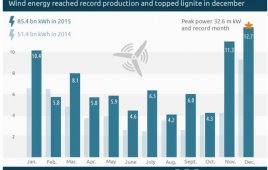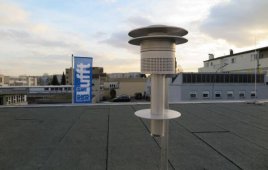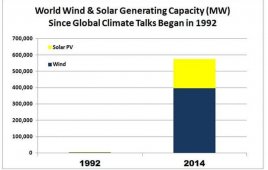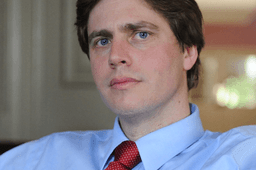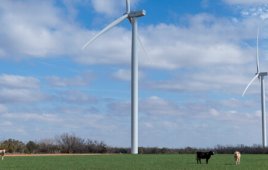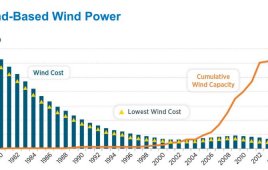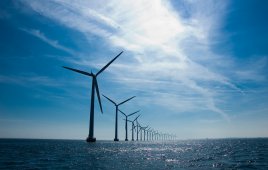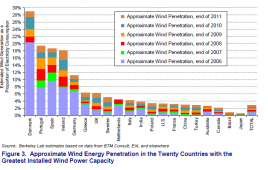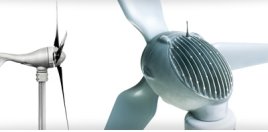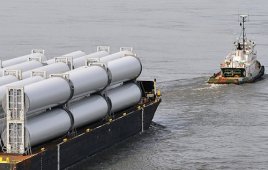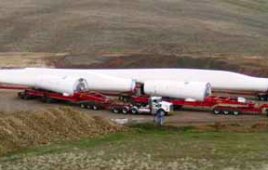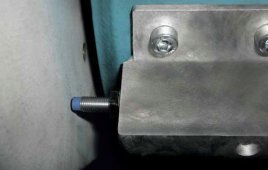Nationwide, wind energy accounted for 13.3% of German electricity generation during the last year.
Lufft introduces new environmental weather sensor
Lufft USA has introduced a new environmental weather sensor that offers exceptional accuracy. The WS3000 is so precise that a regular calibration laboratory isn’t able to measure with the same level of accuracy or certainty. Lufft’s WS3000 measures air temperature, relative humidity, air pressure, and could serve as the reference for all other environmental sensors. With high-quality aluminum housing…
Wind takes the clean power crown
Clearly, among of the main ways to achieve these goals will be measures that encourage a rapid transition away from a fossil-fuels and greater investment and market share for clean energy sources and solutions – primarily wind and solar power, as well as energy efficiency.
COP21: Technology innovation is key to meeting environmental targets
Energy production accounts for two thirds of the world’s greenhouse gas emissions, so a reduction of carbon emissions in the energy sector is of paramount importance.
ACCIONA Windpower to supply turbines for 30-MW Iowa wind project
ACCIONA Windpower, an ACCIONA group subsidiary dedicated to the designing and manufacturing wind turbines, has completed a turbine-supply agreement with Building Energy for a 30-MW wind project located in central Iowa. Building Energy is a global renewable energy company with experience in 24 countries worldwide. Under the agreement, ACCIONA Windpower will deliver 10 AW125-3000 turbines,…
DOE Report: U.S. clean energy technologies are accelerating
The Energy Department recently released the 2015 Revolution…Now report, detailing the state of several clean energy technologies available today in the United States, which provide technology solutions to climate change.
Renewables will drive Denmark’s cumulative installed capacity beyond 16 GW by 2025, says GlobalData
Denmark’s cumulative installed capacity is expected to expand from 13.5 Gigawatts (GW) in 2014 to reach 16.1 GW by 2025, rising at a Compound Annual Growth Rate (CAGR) of 1.7%, says research and consulting firm GlobalData. A single user license: $2,500 The company’s latest report* says that more than half of the total power generation…
A shorter executive summary for DOE’s 2011 Wind Technologies Market Report
This is the first few of nine pages from the executive summary of the 2011 Wind technologies market report issued by the DOE. A link to the full report is below. The U.S. wind power industry is facing uncertain times. With 2011, capacity additions rose from 2010 levels and with a further sizable increase expected…
3.7-kW turbine earns wind industry’s first UL marking
A small wind turbines developer has received the wind industry’s first UL classification for a small wind turbine. The Skystream 3.7 from Southwest Wind power is now certified with the UL 6142 Standard for Small Turbines. This demonstrates that the turbine complies with important safety standards for customers, and it clears the way for installation…
Challenges in moving huge and heavy components
In an ideal world, logistics directors would schedule a train to deliver tower sections, nacelles, and blades to a storage area within a few miles of their wind farm. Trucks would complete the delivery. But the ideal quickly runs off the rails because a few rail tunnels are too narrow for nacelles, many loads are…
Trends in wind forecasting and site assessments
Economic uncertainty and constrained capital have significantly increased scrutiny of potential wind projects. That makes accurate and timely site assessments more important for reducing financial risk. Even after projects are online, operators continue to look for ways to reduce O&M costs, while incorporating new technology to help them monitor farm conditions and alert them to…
Trends in Wind Energy Development
Project Development While wind-generated electricity continues to grow as a premier source of renewable energy in the U.S., project developers are being asked to find more efficient, cost-effective, and profitable ways to harness this resource. In 2010, the U.S. wind industry installed 5,116 MW, a nearly 50% decrease from the previous year’s record 10,000 MW.…
Trends offshore
The offshore wind-industry trends are just taking shape, but they seem to center around the turbines, their foundations, and the equipment and vessels needed to place them. That an offshore industry is testament to the persistence of Cape Wind developers (10 years of persistence) and finally, an accommodating administration that has opened the doors to…
Trends in transportation and logistics
The problem with moving wind-turbine components is their size–they are gigantic. Nacelles can measure 12-ft wide and over 20-ft long, while half of a tower can be 12-ft wide and almost 150-ft long. And blades –conversation stoppers on most highways– easily span 100 ft. Moving these structures takes special equipment, trucks, trains, ships, and harbors.…
Trends in simulation software
General purpose finite-element analysis has proven itself very successful at finding stresses in structures if you assume a steady load. But wind turbines present a range of engineering challenges that arise from large displacements, non-linear material properties, and time varying loads from air flows, conditions which challenge general purpose structural analysis. For these applications it…
How to make good turbines better
Overseeing proper operation and maintenance is important to any wind turbine’s reliability and durability. While it is often tempting to simply swap new parts for old, it may be more beneficial to upgrade them to prevent recurring damage and costly repairs. The right upgrades should improve a turbine’s performance and increase its return on investment.…
Trend in towers
Towers for wind turbines have done a good a job hiding their high-tech origins. For instance, their sections–humbly called cans–are rolled from flat-sheet steel into precise, yet slightly tapered cones and then welded by CNC machines. More CNC machine tools drill holes and attach flanges that allow connecting cans. But for all their sophistication the…
Trends in motors and drives
One trend in wind motors and drives is an increasing demand to refine overall turbine design for lower cost and higher availability. Also, instead of buying the gearbox and motor separately from different manufacturers, some companies offer them packaged together. Lastly, requirements for pitch control are increasing in larger, more powerful turbines. Pitch control is…
Trends in wind hydraulics
As in other areas of the wind industry, hydraulics engineers are looking for ways to improve turbine operating efficiency while reducing maintenance. This leads to a focus on preventative maintenance, rather than just replacing worn parts with new ones from the OEM. Research is also being conducted toward expanding hydraulics in wind transmission drives. Ken…
Trends in gearboxes
Despite the recent surge in wind-turbine announcements regarding direct drives, gearboxes are not going anywhere. They will remain a necessary component in many turbines, and so are pushing trends in several directions—toward lighter overall turbine weight, improved durability, and design for maintenance. “After ten years of research and study, we know why early gearboxes did…

